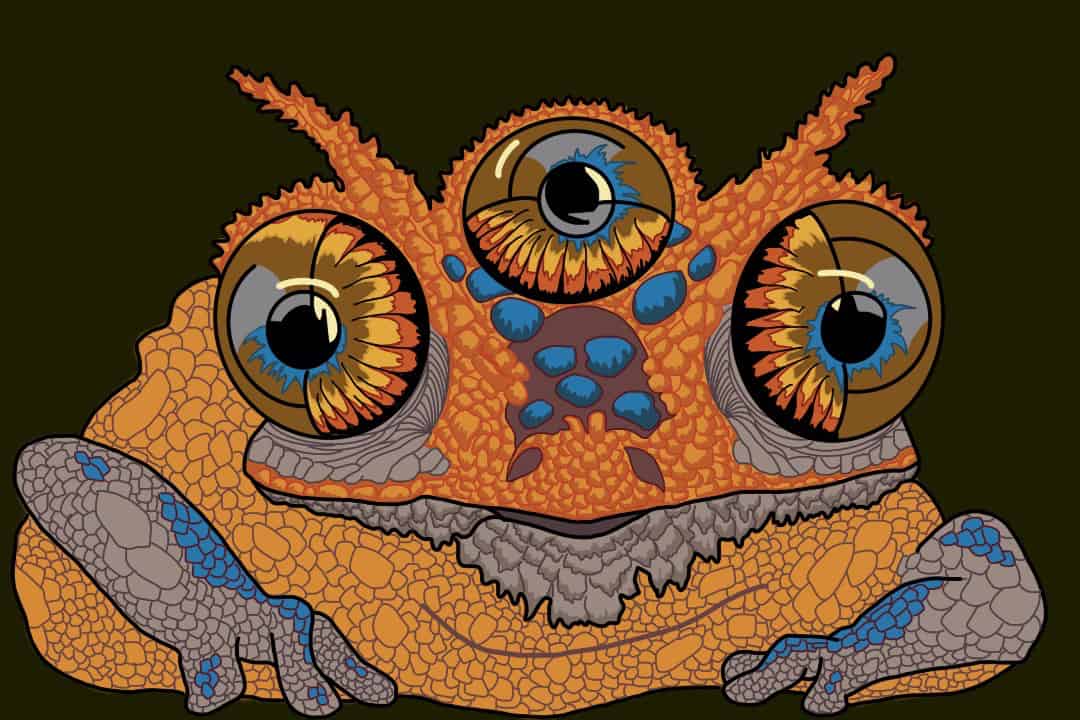If you’ve read texts surrounding Hinduism or Buddhism, you have probably heard of the ‘third eye’ and the great power that it holds over our minds and bodies. You may have been told that it can open up your ‘chakras,’ and that it is key in meditation.
Interestingly, a third eye is actually present in some species, though it may not be as solely spiritual as you think. This ‘third eye’ is the parietal organ, a specialized organ that is well developed in reptiles, birds, and fish. It is a light sensitive — or photosensitive — structure located on the top of the head, and it is often associated with the pineal gland in these animals.
Its role in animals is to monitor light levels during the day, allowing other parts of the brain to regulate the circadian rhythms — the internal biological clock — in these animals. The parietal eye can detect changes in light and dark cycles and help the animal adjust its behavior accordingly. In some reptiles, the eye is also thought to be involved in the ability to regulate body temperature.
It seems that this structure is not currently present in humans, since we did not evolve from animals with the parietal eye. Our evolutionary history diverged from that of animals that possess this structure approximately 325 million years ago. Since the parietal eye’s functions, namely regulating circadian rhythms and thermoregulation, were not essential for our survival, other sensory organs, such as the eyes and skin, took over these functions in humans.
But the parietal eye did not just disappear from us. People who are blind can still regulate their sleep-wake cycles by light and darkness cues. How is this possible?
The photosensitive third eye is ‘hidden’ within the human retina, in the form of intrinsically photosensitive retinal ganglion cells (ipRGCs). ipRGCs contain a photopigment called melanopsin that is responsive to blue light, and they regulate circadian rhythms in humans. Melanopsin allows ipRGCs to respond to light in the absence of input from rods and cones, the other two types of photoreceptor cells in the retina that make up regular vision. “We hypothesize that the parietal eye contains photoreceptor cells that are the evolutionary precursor of rod and cone cells,” says Thomas Sakmar, head of the Laboratory of Molecular Biology and Biochemistry at Rockefeller University. These photosensitive cells can signal to the brain about the presence or absence of light and help regulate the body’s circadian rhythms and sleep-wake cycle.
The pineal gland, known for secreting the sleep hormone melatonin, is closely associated with the parietal eye. The absence of the parietal eye in reptiles seems to shrink the pineal body, as well as cause changes in behavior and activity cycles.
Memory is a brain capacity that could be altered by such an absence of the parietal eye. Although the exact mechanism of the relation is unclear, there is some evidence to suggest that the parietal eye in reptiles may be involved in spatial memory. For example, studies have shown that lizards with a functional parietal eye have better spatial learning and memory than those without one. The parietal eye essentially helps to maintain an internal map of the environment, which is necessary for spatial navigation. Another theory is that the parietal eye provides additional sensory input that can help reptiles form more accurate spatial memories.
Interestingly enough, scientists who traced back to our pre-mammalian ancestors found that these animals did, in fact, have the third eye. The structure is hypothesized to have disappeared approximately 246 million years ago. While humans do not have a physical parietal eye, as reptiles do, we still retain its functionality, and the concept of the third eye has become adopted in spiritual and metaphysical contexts as a symbol of higher consciousness and spiritual awareness.


